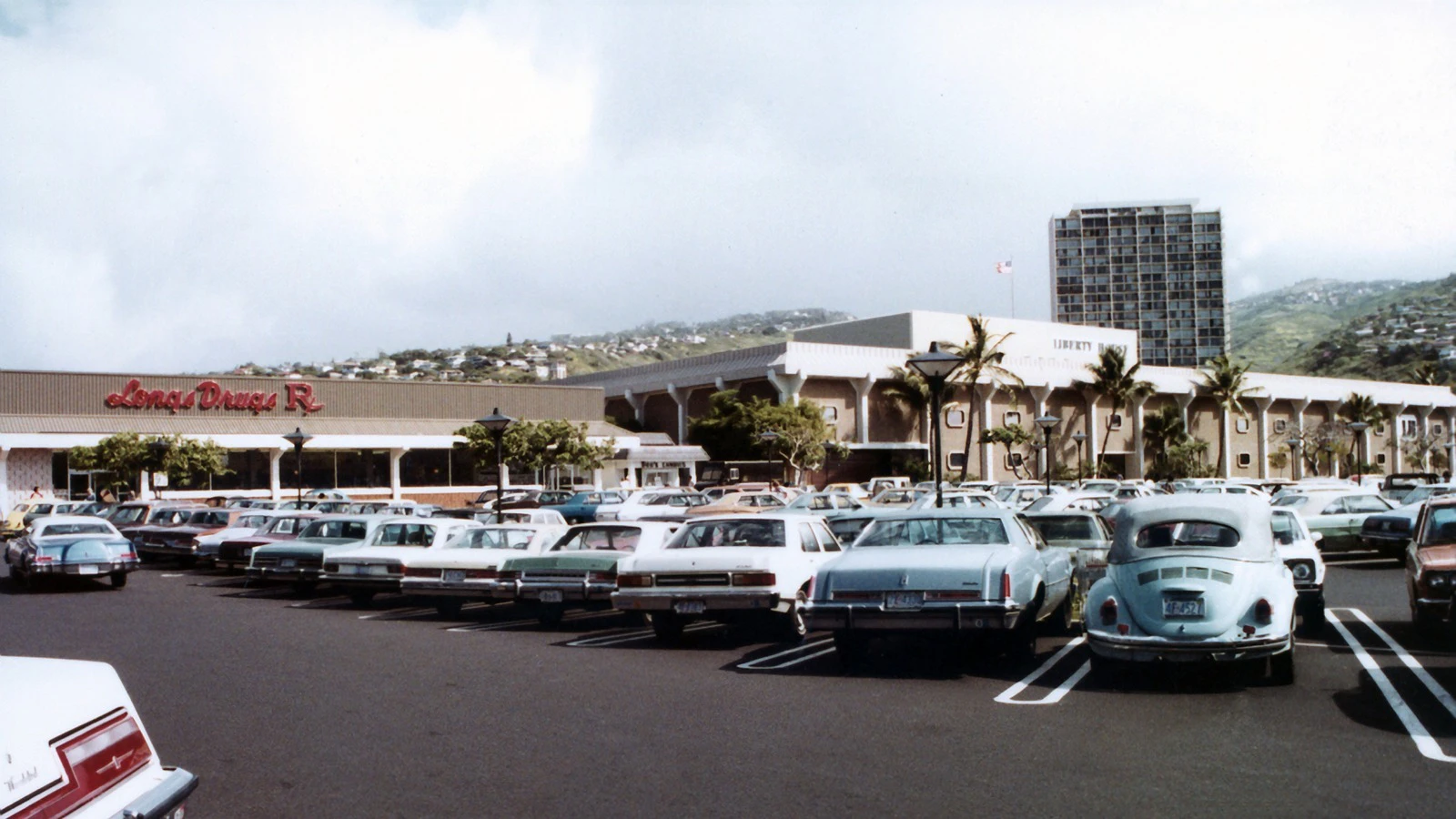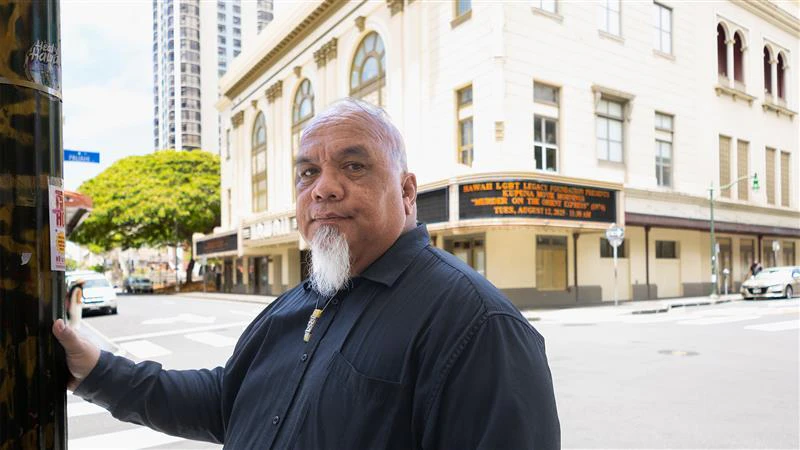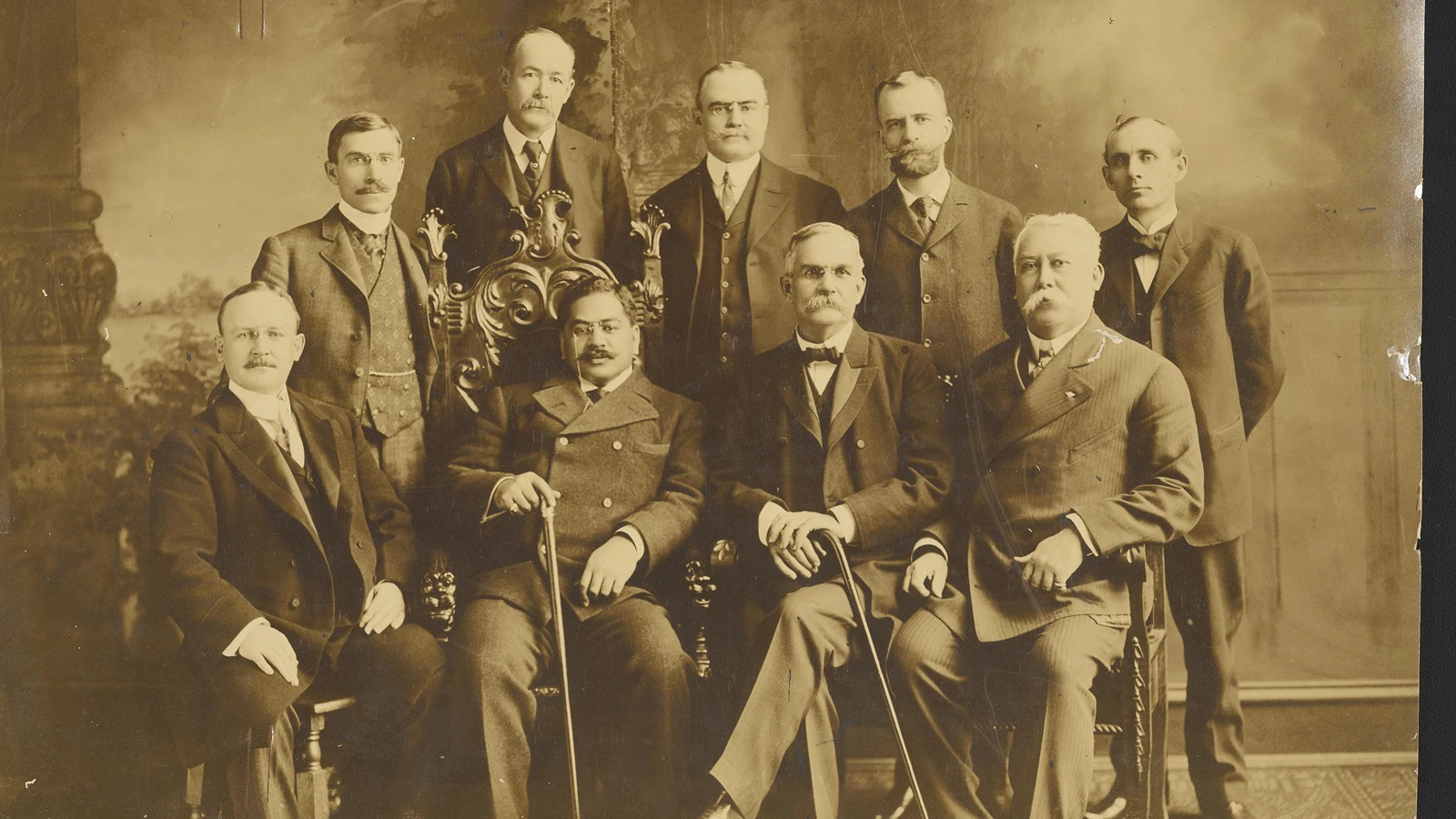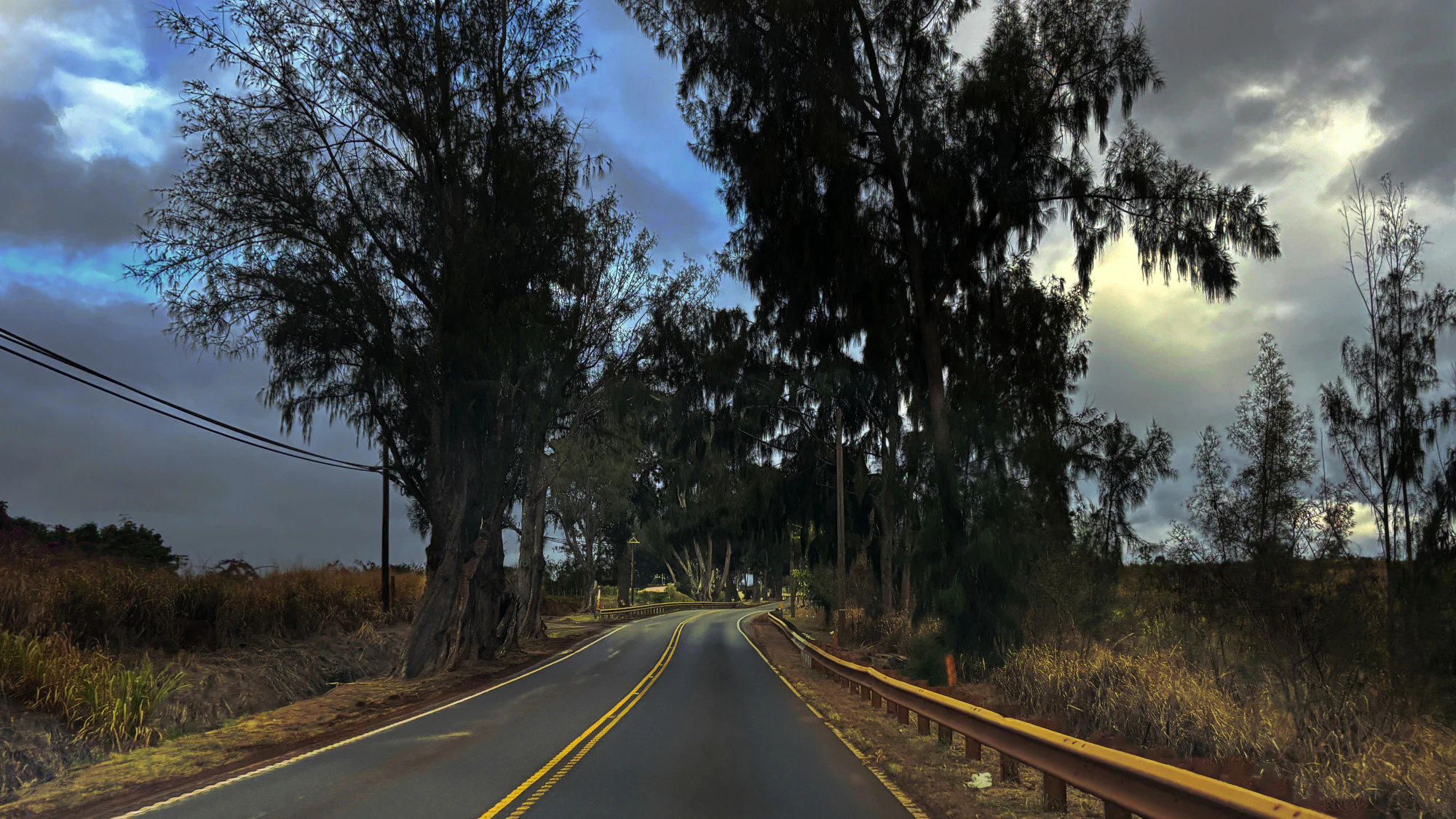When Barack Obama was born in Honolulu in August 1961, it was Bill Quinn’s Hawai‘i.
While John A. Burns is lauded as the founder of modern Hawai‘i, Bill Quinn is silently dismissed from the pages of history. Today, there is little to no memory of Hawai‘i’s pivotal governor who served at a turning point in history: Quinn served as the Territory's final Governor from August 29, 1957 to the conclusion of the Territory on August 21, 1959. He became the first Governor of the State on that same day, serving a single term that ended in December 1962.
Quinn’s omission is most poignantly displayed in the Governor’s office, where the portrait of every elected Governor in Hawai‘i’s history is hung on the walls, except Quinn’s (Governor David Ige’s portrait will likely be unveiled in the next few years).
Meanwhile, one of the last, direct links to Quinn’s administration is gone. With the passing of longtime Hawai‘i powerbroker John Henry Felix in May 2025, Hawai‘i has lost one of the last connections to Quinn’s administration.
However, the sin of Quinn’s omission is not malevolent. To make room for other artwork from the extensive collection of the State Foundation on Culture and the Arts, Quinn’s portrait was removed in 2023, alongside those portraits of every other appointed, territorial governor.
August 1959
“I am proud to have been the last governor of the Territory of Hawai‘i,” he declared in his inaugural address on August 29, 1959. “I am humbly grateful for having been elected the first governor of our great state.”
History’s sweeping force, however contradictory and awkward, converged at Quinn’s inauguration. Nationally, Hawai‘i’s admission in the American Union was heralded as a victory for the nascent civil rights movement.
Quinn reminded the thousands assembled at ‘Iolani Palace of the stakes. “Despite the tensions and frictions of racial promise in our land, we have in a glorious way reaffirmed the principles of the independence declaration.”
Among those in the crowd at his inauguration was Kini Kapahu Wilson, the widow of former Honolulu Mayor Johnny Wilson. “I was eight years old when they built this palace,” she recalled. “It was a kingdom then. Now it’s a state.”
Until February 1953, every territorial Governor was Caucasian, typically selected from a long-established, tight knit kama‘āina haole oligarchy. Upon taking office, President Dwight D. Eisenhower appointed Samuel Wilder King as the first territorial Governor of Hawaiian ancestry. Quinn, a newcomer to the islands without a missionary pedigree, succeeded the ailing King.
"Quinn, of course wasn't a real Republican," remarked longtime Hawai'i Republican Randolph Crossley in April 2000. "Before coming to Hawai‘i he was a Democrat. I think he became a Republican in order to qualify for the governorship, which was then an appointive office."
His brand of politics, to be sure, was reformist in Republican circles. He was a political outsider in 1957, one who had never held elected office. Eisenhower’s appointment of Quinn, however, wasn’t based on the past. It was contingent on Hawai‘i’s future.
In 1957, the Republican Party of Hawai‘i was at a turning point. Following the electoral inroads made by the Democratic Party in 1954, Quinn fought to moderate the party’s image in order to help the GOP maintain relevance to Hawai‘i’s young, scrappy, and hungry electorate.
Quinn’s Jeffersonian, Democratic Vision
As Hawai‘i approaches the 250th anniversary of America’s independence (known as its Semiquincentennial anniversary), Quinn’s Jeffersonian vision for democracy in Hawai‘i (one, which, perhaps ironically, was shared with his Democratic successor John A. Burns) carries relevance to present-day debates over Hawai‘i role in the United States.
His inauguration marked a founding moment for the experimental State of Hawai‘i. “Our founding fathers form a republic as the governmental genus best able to secure the unalienable rights of all. Our state government is similarly patterned,” Quinn declared in his address.
“The powers of government centralized in one man at the time of the American revolution have been separated into three parts. The composite man of government can gather his strength from the infused blood and culture of men and women of all our races. This is further testimony to the wisdom of the framers of democracy.”
It was a vision for democracy to be made tangible through Quinn’s years as Hawai‘i’s first Governor. Even moreover, it was a vision for the Republican Party of 1959.
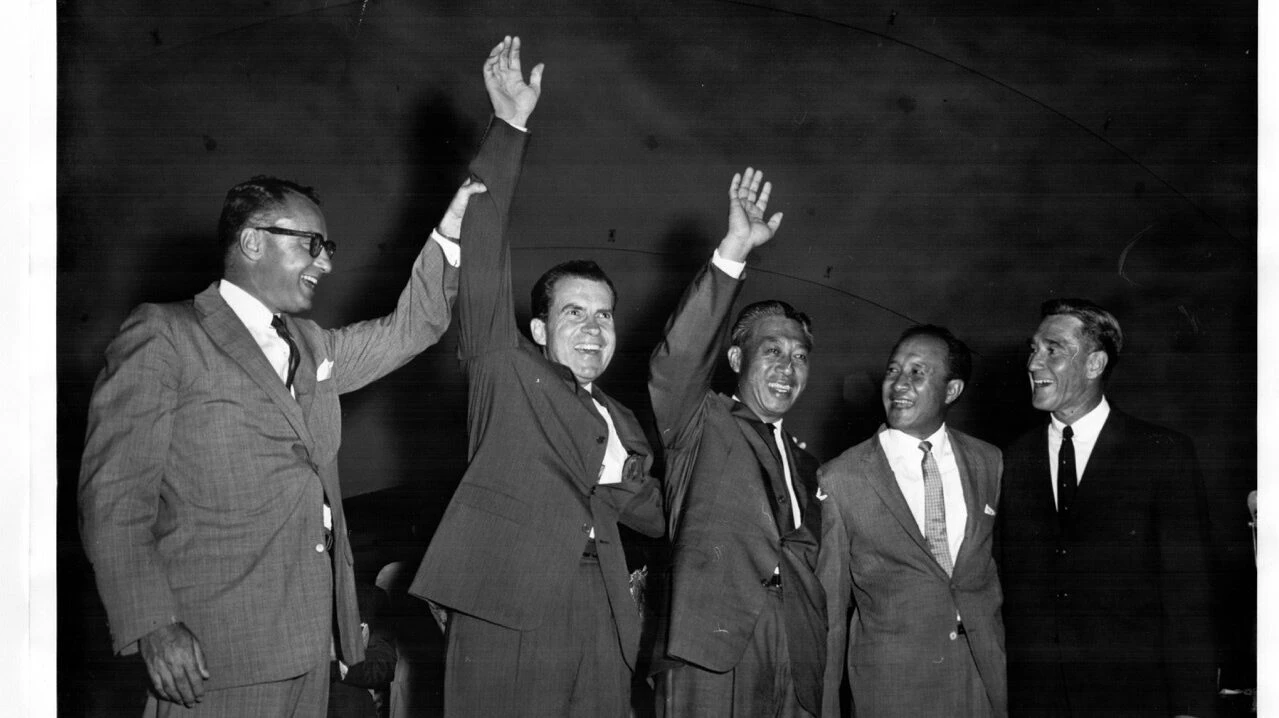
At the time, Hawai‘i’s Republican Party was still formidable. The Republicans controlled the State Senate. Their leadership included figures like U.S. Senator Hiram Fong, Honolulu Mayor Neal Blaisdell, and Lieutenant Governor James Kealoha. In 1961, Quinn appointed Wilfred Tsukiyama as Chief Justice of the Hawai‘i Supreme Court, making him the first Asian-American to lead the court in Hawai‘i’s history.
These were the leaders of a new Republican Party, one that – if it had stayed united –might have secured Hawai‘i as a two-party state into the present-day.
As Governor, Quinn’s legislative accomplishments were significant. Through staffers like John Henry Felix, he oversaw the re-organization of all state departments, consolidating dozens of government agencies and entities through the omnibus Hawai‘i State Government Reorganization Act of 1959. The mission was effective, efficient, fiscally responsible government.
Unexpectedly, he also led the State of Hawai‘i through its deadliest crisis before the Maui Wildfires of August 2023. In May 1960, a 9.5 magnitude earthquake in Chile triggered a tsunami that devastated Hilo, killing 61 people and devastating East Hawai‘i Island. The State quickly sprang into action; Quinn called a special session of the State Legislature to provide unemployment relief to devastated residents, financing for devastated businesses, and funding for disheveled communities that needed to rebuild infrastructure, schools, and housing.
In 1961, he created the State Land Use Commission, a new model of state-based zoning that classified all state land as either agricultural, conservation, or urban (the rural designation was added in 1963). In the ’60s, the democratization of land ownership was seen as a means of guaranteeing social and economic stability to local residents. It was a period where Hawai‘i was regarded as a national policy leader in conversations about planning.
The Disappearance of Bill Quinn
Quinn’s downfall might have been his attempt to pursue land reform, which he poorly labeled as Hawai‘i’s Second Mahele. It was an attempt at Jeffersonian democracy for Hawai‘i’s residents influenced by a since forgotten section of Hawai‘i’s Constitution: “The public lands shall be used for the development of farm and home ownership on as widespread a basis as possible, in accordance with procedures and limitations prescribed by law.”
Quinn’s agenda soon stalled. The Republican Party divided against itself. The Democrats, long locked out of power, were organizing to finish the ‘Democratic Revolution’ of 1954. Lieutenant Governor James Kealoha, feeling that Quinn had used him to gain the Hawaiian vote while failing to provide access to the administration’s patronage network, challenged Quinn in the Republican nomination in 1962. It was a politically messy affair, alienating Native Hawaiians from the party and costing the Republicans control of the Governor’s office.
John A. Burns and his running mate, William S. Richardson, defeated Quinn in November 1962. Republicans also lost the State Senate, giving the Democratic Party full control of the State Legislature. Democrat Daniel K. Inouye was elected to the U.S. Senate, while Democrats Spark Matsunaga and Tom Gill were elected to the House.
The 1962 elections heralded the start of one-party dominance in Hawai‘i. Republicans would never again win the Governorship until Linda Lingle won in 2002, 40 years later.
Quinn’s Republican Party failed to germinate. Even so, he still gave the State of Hawai‘i an optimistic vision for a democratic, egalitarian future. “There is a strength in our state which can imbue our nation with renewed faith in the equality of man. There is a genius in our people which can do more for peace in our time than the billions we spend for defense.”
It was a grand vision, perhaps too grand. However, that doesn’t mean it should be forgotten.
Quinn, even with his portrait in storage, cannot afford to be forgotten.


